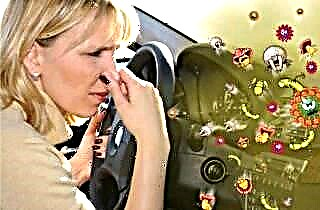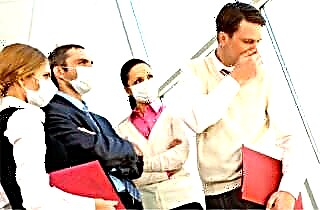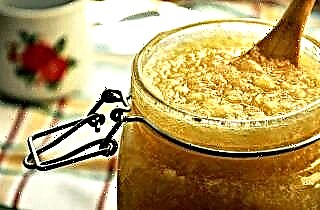Everyone knows what a cough is. This is a very common symptom with which people seek medical attention. It should be noted that bronchospasm is a natural reaction of the respiratory tract, aimed at removing excess phlegm and foreign particles from the body. But if a cough bothers for a long time, negatively affects the general well-being of a person and his quality of life, this symptom is recognized as a pathological process and should be treated.
Views
 What is a cough? Bronchospasm, starting with a deep breath, after which the vocal cords of the mucous membrane close, and the respiratory muscles contract, is a sharp expulsion of air from the lungs. During the narrowing of the glottis, the pressure inside the chest increases, the trachea and bronchi narrow. This is an important function of coughing when the natural mechanism of self-cleaning is disturbed. Bronchospasm helps a person stay awake during life-threatening arrhythmias and contributes to a normal heart rate.
What is a cough? Bronchospasm, starting with a deep breath, after which the vocal cords of the mucous membrane close, and the respiratory muscles contract, is a sharp expulsion of air from the lungs. During the narrowing of the glottis, the pressure inside the chest increases, the trachea and bronchi narrow. This is an important function of coughing when the natural mechanism of self-cleaning is disturbed. Bronchospasm helps a person stay awake during life-threatening arrhythmias and contributes to a normal heart rate.
There is a cough with sputum (it is also called productive or wet) and without it (unproductive or dry).
Depending on how long the cough lasts, bronchospasm is divided into acute, disturbing up to 14 days, subacute - within 14-21 days, prolonged - over 21 days and chronic - 3 months or more. If the symptom persists for about a month and recurs up to 4 times a year or more, extended examinations should begin.
In the morning, a cough appears most often in people with nicotine addiction, suffering from chronic lung diseases, as well as in patients with bronchial asthma. Nocturnal bronchospasm is typical for patients with pulmonary tuberculosis and oncological neoplasms in the respiratory system. Cough throughout the day, worse in the evening, occurs with bronchitis and pneumonia.
 Timbre and volume can also tell a lot about a cough. So, loud, "barking" bronchospasm, arising in the form of convulsive seizures, is typical for patients with whooping cough, with cancer of the trachea and infectious processes in the throat. A silent cough occurs with ulcerative defects in the throat, inflammation of the vocal cords also causes this type of cough.
Timbre and volume can also tell a lot about a cough. So, loud, "barking" bronchospasm, arising in the form of convulsive seizures, is typical for patients with whooping cough, with cancer of the trachea and infectious processes in the throat. A silent cough occurs with ulcerative defects in the throat, inflammation of the vocal cords also causes this type of cough.
Bronchospasm accompanies a number of different infectious processes in the throat and other human organs. As a rule, an acute cough begins with viral diseases. The inflammatory process can occur in both the upper and lower respiratory tract, bronchospasm in this case is the spread of the infection.
The sudden onset of cough in adults can be life-threatening, especially in the elderly. The symptom may appear in parallel with rapid breathing, disturbance of consciousness, choking and chest pain.
Bloody discharge when coughing up, sudden bronchospasm due to the ingestion of small pieces of food into the respiratory system, fragments of artificial teeth in adults or small objects in children are symptoms that require immediate medical attention. And a patient suffering from a chronic cough needs high-quality diagnostics and effective treatment.
Causes
There are several reasons:
- odors irritating mucous membranes (for example, paints and varnishes), tobacco, dust, gases;
- diseases of the ENT organs;
- pathological processes in the throat - ARVI, bronchial asthma, pulmonary obstruction, tuberculosis, oncology;
 disorders of the functioning of the cardiovascular system, occurring against the background of heart failure;
disorders of the functioning of the cardiovascular system, occurring against the background of heart failure;- diseases of the gastrointestinal tract;
- side effects of certain medications, especially their powdered forms;
- stress causing a psychogenic cough;
- too high or too low temperature of the inhaled air;
- allergy to environmental components or food.
At the same time, several factors may appear at once that cause bronchospasm. Clinical, laboratory and instrumental examination of the patient will show why a cough occurs. Sometimes a cough that occurs during diagnosis baffles even experienced specialists.
Most often, people suffer from rhinosinusitis, bronchial asthma, reflux, viral infections, chronic bronchitis (smokers), lung obstruction. Meningitis, nodular goiter, and "high altitude disease" are rare.
It is often difficult, even in countries with a high level of health care, to recognize where a cough is coming from. Coughs in adults of unclear origin account for up to 40% of general treatment practice. These patients are forced to treat their cough symptomatically.
Circumstances of occurrence
To establish a diagnosis, the doctor will ask the following list of questions:
- How long does the cough bother?
- Is it due to a viral infection?
- Are there seasonal exacerbations?
- Does the patient suffer from asthma attacks, is there a whistling sound when breathing?
- Is there a cough and discharge from the nasal passages?
- Are there gastrointestinal problems such as heartburn or belching?
 What is the degree of presence in the life of a coughing factor that provokes bronchospasm (smoking, chemical irritants)?
What is the degree of presence in the life of a coughing factor that provokes bronchospasm (smoking, chemical irritants)?- Is the patient taking other medications?
A cough caused by serious complications requires close medical attention.
Pathological cough in an adult, causes:
- coughing up blood;
- excess air in the pleura;
- broken ribs;
- formation and / or increase in the size of a hernia in the diaphragm and groin;
- violation of the movement of blood through the vessels;
- arrhythmia;
- intracerebral hemorrhage;
- migraine;
- poor sleep;
- enuresis and kalomazanie;
- vomit.
Diagnostics
The standard tests for examining a coughing patient is to determine the chemical composition of sputum released during coughing and blood. Sometimes the doctor finds it difficult to make a diagnosis, as a result of which additional tests and examinations are prescribed, primarily radiography. The image helps to find out some of the causes of the appearance of cough, to detect neoplasms, to reveal the darkening of the pulmonary field or reticular reconstruction of the pulmonary pattern.
Spirometry is a method used to measure the volume and rate of external respiration. Together with spirography, this diagnostic method makes it possible to identify diseases of the bronchopulmonary system at an early stage and to assess functional disorders of pronounced and developing lung diseases.
In the treatment of cardiovascular diseases, bodyplethysmography is used. This method determines the parameters of the lungs and reveals hidden pathologies. This procedure is painless and safe for the patient's health, so the analysis can be taken as often as the treatment requires.

Specialized medical centers also use tussography. This modern diagnostic method makes it possible to judge the frequency, degree of manifestation and mode of coughing, which provides a high probability of identifying the causes of the disease.
Bronchoscopy is another method for examining lung tissue, indicated for suspected lung cancer. Bronchoscopy is performed using a bronchoscope - a probe with a video camera that transmits an image to a computer monitor. Bronchography examines the bronchi using an X-ray with a contrast agent. Pleurisy, tuberculosis, oncology of the lungs and pleura can help identify thoracoscopy. The thoracoscope is inserted into the chest by the puncture method.
Medications
It is advisable to treat a cough only if the symptom is systematic and negatively affects the patient's condition. First of all, the focus of infection is identified, and only after that complex therapy is prescribed, since cough is only a symptom of the disease. Among the drugs used to combat bronchospasm are antitussive, expectorant and combined.
Centrally acting antitussive drugs affect the corresponding centers of the brain, suppressing the cough reflex. According to their composition, they are natural and chemical, there are also drugs that have a narcotic and non-narcotic effect.
Narcotic drugs are used only in clinics for medical reasons. Non-narcotic drugs have an anesthetic effect, relieve spasms.
Antitussives of peripheral action have an analgesic effect on the mucous membrane, reduce the reflex stimulation of cough, relaxing the bronchi. Their main purpose is to moisturize the mucous membrane and reduce the viscosity of sputum.
These include aerosols, steam inhalation and intravenous infusion of fluid into the body, carried out only in a hospital setting. This group of drugs also includes funds that have an enveloping effect and create a protective layer in the throat (lozenges, syrups). Anesthetic drugs are used in a stationary setting.
Expectorant drugs promote mucus excretion by thinning and increasing the volume of sputum, stimulating the glands of the bronchial mucosa. Herbal remedies are produced in the form of drops, tablets, decoctions, tinctures, teas and syrups. Mucolytics are considered effective drugs that thin mucus and facilitate coughing.
Combined drugs soften cough reflexes during bronchial spasms, are used for infections of viral or bacterial origin. These funds contain components of antihistamine and expectorant action. They are assigned according to the indications.

 disorders of the functioning of the cardiovascular system, occurring against the background of heart failure;
disorders of the functioning of the cardiovascular system, occurring against the background of heart failure; What is the degree of presence in the life of a coughing factor that provokes bronchospasm (smoking, chemical irritants)?
What is the degree of presence in the life of a coughing factor that provokes bronchospasm (smoking, chemical irritants)?

